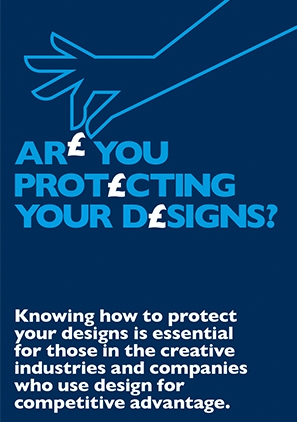Fashion technology wearables - have you registered your IP rights?
The market for fashion technology wearables and smart accessories is growing at an astounding pace with fashion designers and consumers embracing the concept of fashion electronics being incorporated into clothing in advanced textiles or worn as accessories and implants.
As London Fashion Week September 2019 opens its doors we are looking out for the latest wearable tech and digital couture headlines with a keen eye. Last year was eventful for the technology and wearables market, with robots stealing the show and wearable breast pumps with smartphone app connectivity making headlines.
As well as smart watches and fitness trackers, we’ve seen earbuds that can provide live translation, ties with hidden spy cameras, trousers with keyboards (“keyboard pants”), Bluetooth enabled cocktail dresses, and ski goggles with head-up displays. Furthermore, contemporary fashion technology has the media’s attention this year, with a focus on biomaterials and other innovative solutions to develop sustainable fashion and the “circular fashion system”.
In such a field with lots of different players and plenty of innovation, it is now more than ever worth considering how IP rights can be used to protect your wearables product, design or innovation. What’s more, IP can generate income if sold or licensed, like more tangible forms of property.
IP for wearables – trade marks
Trade marks protect your brand and product names and symbols. Use ® if your trade mark is registered, TM if not.
The fashion industry favours trade marks as valuable assets that can prevent competitors from taking advantage of a brand’s reputation. They are also very effective in stopping consumers being confused by identical or similar signs in the marketplace.
For wearable technology products combining a garment or accessory with an app, it is important to ensure that signs relating to both the wearable device and the companion app are protected with a registered trade mark.
Read our guide to trade marks
Read moreIP rights for wearables – designs
Registered designs protect the appearance of your product and its components and so ideally suit the wearable tech fashion market where consumers are focused on a product’s design and aesthetics rather than just its technical features. A registered design can protect the particular shape of a smart watch, or its user-interface, for example.
Where the shape of the product has a solely functional purpose, such as an earbud designed for a comfortable fit, patent protection might be a better strategy.
Design registrations can be a low cost but effective IP right as they can be obtained far more quickly and at less expense than patents and so provide coverage for certain aspects of a product at good value. The speed of registering a design is one of its most attractive features – most applications are accepted within a week or two at the most.
Read our guide to registered designs
Read moreIP for wearables - patents
Patents are used to cover technical inventions so in practice, this means that patents can be used to protect inventions relating to a product or process that solves a particular problem.
In wearable technology, patents could be used to cover improvements in sensors in a wearable device, communications between a wearable device and a companion phone or materials used to make wearable devices, for example.
In order to obtain a patent, an invention needs to be new (novel) and non-obvious (involve an inventive step) - more on this in our patent guide here: https://dycip.com/patent-faq.
Considering patenting in the field of wearable technology, it is worth being aware that there are restrictions on patent eligibility in the fields of software and methods of diagnosis and treatment. These are particularly relevant in wearable technology where a large part of the user experience is dictated by the software the user interacts with and the particular intricacies of designing software to run on devices so constrained by their size, shape, and limited power mean that the software challenge can be a big hurdle to overcome when producing a successful wearable device. Also, one of the growing trends within wearable technology is that of health devices with blood pressure monitors, ECG devices, blood sugar monitors all being implemented in wearable form.
Fortunately, this does not mean that patents cannot be obtained in these areas. The restrictions on patents for software only apply to extent to which the invention is that of a computer program as such. So, if the invention has a technical effect existing beyond that of providing a better computer program, with some careful drafting, it may be possible to get a patent.
Similarly, difficulties in patenting inventions relating to methods of diagnosis or methods of treatment may be circumvented by restricting the scope of the patent to cover the underlying invention without claiming the diagnosis or treatment.
IP for wearables – what to do next
It is worth considering how intellectual property rights could be used to protect your ideas. Timing is key and you should build action points into your business and project plans, and be prepared to allocate budget for IP protection.
- Check for existing patents, designs, trade marks and domain names – are you free to use your idea or name?
- Secure your own IP rights. File for patents, designs, trade marks and domain names. Look out for inventions that can be patented when developing products involving wearable technology. For example, patentable inventions could arise when developing sensors, ways of communicating between devices, ways of integrating devices with clothes, reducing power, or making elements smaller.
- Get professional advice as there are many pitfalls for the uninitiated.
If you have any questions about protecting wearable technology using registered IP rights, please do get in touch.
